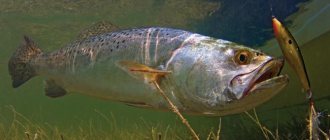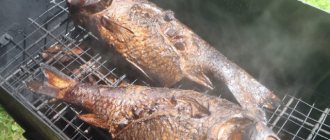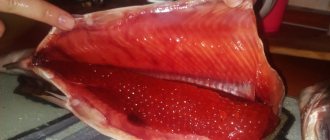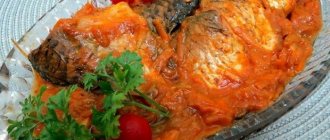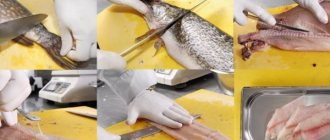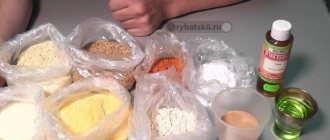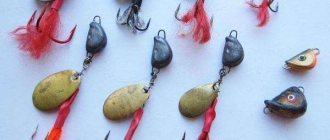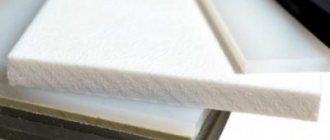Selection and processing of fish for ramming
- The word "ram" does not describe a specific type of fish. It identifies any dried fish you can find. Most often, an appetizer for foam is prepared from pike, crucian carp, bream or roach . No less tasty taranka is obtained from silver bream, goby or perch . To make a ram, choose small-sized fish. It is better if it has an average fat content.
Choose the right fish
- Preparing fish for cooking involves several stages. First, you need to rinse it thoroughly under running water to get rid of the pungent odor, sand and debris. Then you need to remove the insides. If you prefer to eat uneviscerated dried fish , you can get by with just the first stage of preparation.
- If you have returned from summer fishing or purchased fish during the hot season, it is better to remove the insides. This is due to the fact that individuals living in water feed on grass and microorganisms. Therefore, if there are entrails, the ram will taste bitter. To maintain a pleasant flavor, remove the gills.
How to make a battering ram correctly: 2 methods and 3 ways
- There are several ways to prepare taranka at home. You can use the option that suits you.
- You can salt fish in several ways: dry or wet. Below we will discuss in detail the main features that will help you make a tasty battering ram.
There are several variations of salting
How to salt taranka using the dry method?
If you decide to salt the ram using the dry method, then there are 2 options. Both of them are not difficult to use. Choose the option that suits you.
First option
- First, the fish must be washed under running water. Then wipe it with paper towels to remove any remaining water. Rub each individual with salt along the entire length of the carcass (including the head and tail). Try to make movements so that the salt penetrates under the husk. Rub the fish's mouth and gills with salt.
- Take a tight rope. String the fish carcasses onto it so that a distance of 5-7 cm is maintained between them. This will allow the meat to dry evenly. Hang the fish in the shade where there is a draft. Leave in this position for 2-3 days. After this, you can start using the battering ram.
We hang it in the shade, but in a draft
Second option
- To use this method, prepare a deep container. It would be better if it was made of glass. Place about 30 g of salt at the bottom of the bowl. Place several fish carcasses on top. The next layer is salt. Alternate layers until you run out of fish.
Alternate with salt
To determine the ratio of salt and fish, weather conditions must be taken into account. If you have the opportunity to place the carcasses in a cool place (basement or refrigerator), then you can use 300 g of salt per 1 kg of fish. If you are preparing taranka in the summer, and there is no way to place it in the refrigerator, then it is better to use 1 kg of salt per 1 kg of fish.
- Place a flat plate on top of all layers and cover it with pressure (a large stone, a 3-liter jar of water, etc.). Leave the fish to salt for 2-3 days. After this, rinse the carcasses of salt under running water.
- The final stage of preparing taranka is hanging the carcasses in the shade in a draft. In this state they should hang for at least 3 days. After this they can be consumed.
Wet salting method
- If you decide to use the wet salting method, then there is nothing difficult about it. First, prepare a saline solution. To do this, dilute 100 g of salt in 1 liter of water. Pour the prepared solution over the fish so that it is completely under water.
- Cover the container with a flat plate and pressure. This will prevent the carcasses from floating. You need to keep the fish in brine for at least 3 days. After this, rinse the carcasses under running water or soak in clean water for half an hour to remove excess salt.
- When all stages have been completed, hang the fish on a wire or rope in the shade where there is a draft. Leave it in this position for several days, after which you can consume it.
The wet method involves salting in a solution
- To make the batter, use only coarse salt. Its peculiarity is that it draws moisture from the meat. If there is little water in the fish, it will dry out faster.
- The disadvantage of fine salt is that it contributes to the formation of a small crust on the surface of the fish, which reduces the degree of salting.
Other recommendations for preparing taranka:
- Add a little sugar to the salt to add piquancy and tenderness to the taranka.
- Select the optimal weight of oppression. The more fish, the more weight you will need.
- Cover containers with fish with a fine mesh to prevent insects from getting inside.
- Make small cuts on large fish to help it dry better.
If the ram is too dry, you can restore it. To do this, pour water over it, then wrap it in parchment paper for 24-30 hours. As the parchment dries, moisten it with clean water.
Excessively dry ram can be used as spices. To do this, you need to grind it in a coffee grinder. The resulting powder is used to prepare salads, soups and other dishes.
Smoking fish
How is fish smoked? Apart from synthetic products like “liquid smoke,” smoking fish and meat is a rather lengthy and labor-intensive process, which is almost impossible to reproduce at home. Let us only note that there are two different methods - cold smoking and hot smoking.
The methods vary greatly both in technology and in the initial result. Cold smoked fish is more tasty and does not lose valuable nutritional properties, substances and vitamins necessary for the human body.
It has long been valued for its taste and in the old days it was sold in huge quantities not only to the domestic market, but also abroad. It is used boiled and in large quantities goes for salting for subsequent drying. Dried roach
Can be stored maintaining its taste for a long time. During a massive fish movement, as happens every year (the spring fishing season) in Astrakhan, there is a need and desire to preserve the caught catch. Some part of the fish is simply frozen for further use as food, often for frying; the rest of the spring roach is salted.
Recently, while browsing information on the Internet, I discovered a lot of fanciful and unusual recipes for drying roach. I got the impression that they were written by people who had never been involved in salting or drying. Not being a technologist in the food industry, but simply sharing my existing experience, I decided to make a short article about salting and drying roach. Let me make a reservation right away: everything described in this article is purely personal experience and the experience of people close to me who annually engage in this traditional activity for Astrakhan residents. Everything what you want to use and repeat you do at your own peril and risk. In this article, I will try to highlight the main points, illustrating them with photos. In general, in Astrakhan they salt and dry various fish, not only roach. It’s just that, given the volume of production, this is what is most often dried. If you look at the photo for this article and click on it, you will see that they also often dry sabrefish, ram (bream), sopa, pike perch, pike and even perch... You can personally see all the splendor and assortment at the fish market in Astrakhan called “Selenskie Isady”, where dried roach, etc., is historically sold by the piece, and not by weight, as in other cities.
There are two main ways to salt roach:
- dry method (traditional for Astrakhan)
- ambassador to tuzluk
Brief information - brine is a concentrated salt solution used for salting. Empirically, the concentration of the solution should be such that the abandoned potato floats up. The proportions are different, I will not argue about this, nor will I go into detail, especially since this salting method is used much less frequently. In my opinion it is more troublesome.
Let's take a closer look at the dry method of salting roach. So, how to salt vobla? What we will need:
Roach salting technology
After the entire roach has been washed away from salt and mucus, we put it in an empty container and prepare for the final stages of stringing the roach into separate strings and hanging it to dry.
7. A few words about stringing roach. In Astrakhan, it is customary to say “chal vobla,” that is, make chalks. Chalks are fagots with roach. For chalks, you can use nylon cords, wire, etc., in general, whatever you have at hand. Depending on the size, the roach is threaded through the eye in several pieces, usually 5-6 pieces, if the fish is small it can be more (I have never seen more than 10), if the fish is large - correspondingly less. If they dry bream 2-3 pieces at a time, then trophy-sized fish are dried one at a time... Large fish (pike, pike perch, etc.) are often strung by the lower jaw. Stuffing the cups too tightly will lead to poor, uneven drying, even to the point of spoilage.
In Astrakhan, the salt used for salting is not thrown away, the resulting brine solution is drained, and the salt is simply dried in the sun and removed until the next season, where the whole process is repeated again..
8. After preparing the chalks, they are hung on hangers. For drying on an industrial scale in Astrakhan, fish factories use special covered sheds where fish are dried on hangers. At home, any other ventilated premises are suitable. Ideally, dry on balconies and loggias equipped with mosquito nets. Sometimes they make special boxes covered with gauze inside which the roach is dried. Even more often, they dry it directly in the open air, in the shade. In Astrakhan, a roach caught at the beginning of its course often has time to dry before a large number of flies appear that “sit” on the fish and lay their larvae, rendering the dried roach unusable

